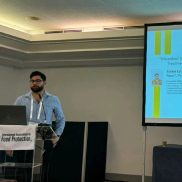Exploring Pulsed Electric Field (PEF) Microbial Inactivation for Food Processing
The application of short electric pulses of high voltages, short duration to biological cells and tissues, to enhance membrane permeability is becoming an important method in various applications including food science and technology as discussed in Risks and benefits of pulsed electric field (PEF) technology.
Pulsed Electric Fields for Microbial Inactivation?
The application of Pulsed Electric Field (PEF) technology as an alternative application to classical thermal treatments for microbial inactivation in liquid and semi-liquid food products and beverages has been found to be prominent and to have a lot of advantages due to the efficiency of microbial inactivation and preservation of the quality characteristics of the product. PEF application does not involve a high thermal effect that could affect heat-sensitive nutrients like vitamins and enzymes and does not alter the taste, texture, or appearance of food products, ensuring that the quality remains unaffected. On the contrary, traditional thermal processing methods can achieve microbial inactivation however, the thermal effect can lead to undesired changes such as enzyme deactivation, color changes, and loss of essential vitamins. In parallel, different studies have shown that PEF is an effective technology in inactivating microorganisms, particularly bacteria and yeast. For example, PEF has shown that it can inactivate vegetative cells of bacteria such as Escherichia coli in orange juice or yeast in low-alcohol wine. However, while the technology is effective against vegetative cells, PEF resistance in bacterial spores remains a challenge and it is one of the main limitations of the technology when used for food preservation.
Current application of PEF as a pasteurization alternative
In terms of applicability and industrial applications, PEF technology for microbial inactivation is established and regulated as a pasteurisation alternative for fruit juices from the FDA’s juice HACCP regulations (21 CFR 120), which allow the use of technology for commercial purposes. In addition, to comply with these regulations, food processors must implement sanitation and good manufacturing practices (GMP) while producing PEF-treated fruit juices. Finally, the treatment must also meet a performance standard that results in a 5-log reduction of the most resistant pathogen likely to be present in the fruit juice. However, currently, the technology is regulated, and limited companies use it due to different challenges related to energy consumption, scalability, complexity, and costs. Thus, additional work needs to be done until the technology gains more industrial application.
Microbial Targets for further Optimisation
In our study, the focus was in the assessment of different strains of four model microorganisms, two of them pathogenic: Escherichia coli and Listeria monocytogenes, and two of them spoilage: Lactiplantibacillus plantarum and Saccharomyces cerevisiae under different PEF treatments. This assessment revealed diverse responses dependent on the different microorganisms and strains when robust strain targets were identified. In the following steps of this research, we intend to assess the robust microorganisms and understand the underlying mechanisms behind their resistance under PEF treatments for both pathogenic microorganisms. We believe this work will help in further optimization of the PEF technology without or with combining the technology with other hurdles. For example, combining PEF with antimicrobial compounds, mild heat, or other non-thermal technologies, such as high-pressure processing, could potentially increase the efficiency of the process and be an alternative to the present food pasteurization process.
The future of PEF technology for further applications
In conclusion, PEF microbial inactivation is a promising technology that offers a non-thermal alternative to traditional food preservation methods. Its effectiveness in inactivating microorganisms, combined with its potential to preserve food quality and nutrients, makes it an attractive option for the food industry. As research continues to advance the technology, we can expect to see its widespread adoption in various food products and applications with or without combination with other hurdles.
Further Reading
Non-thermal plasma (NTP) for the improvement of food safety and quality
The Impact of Strain Variability on the Inactivation Efficacy of Ultrasound Technology
Understanding Consumer Perception in Food Product Development: Key to Market Success











































































